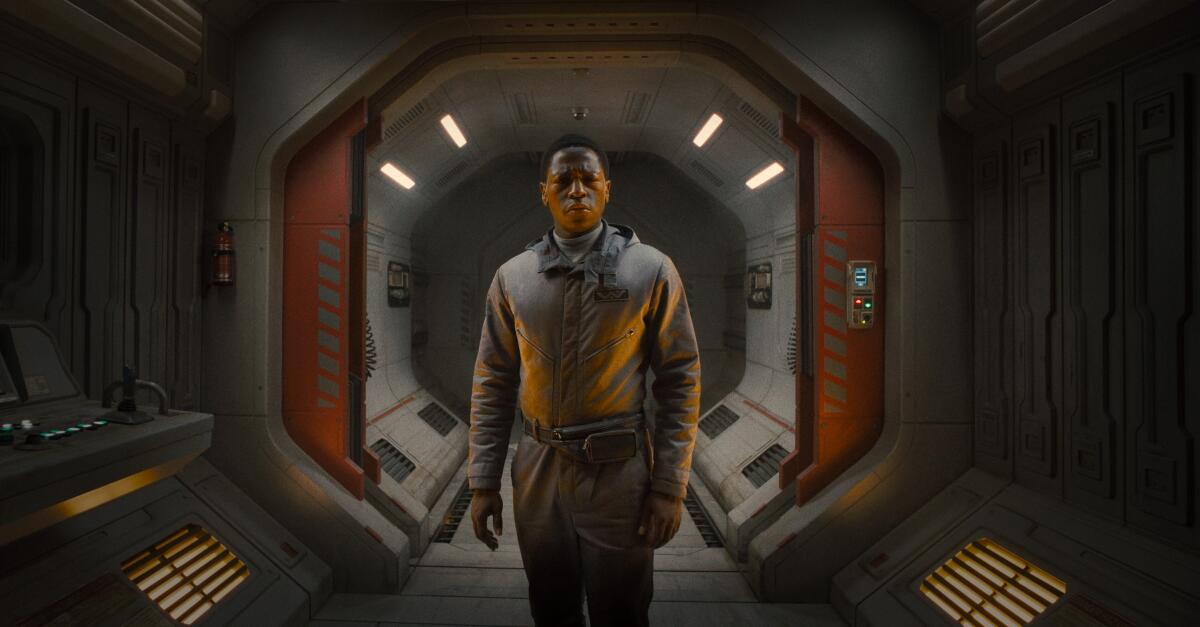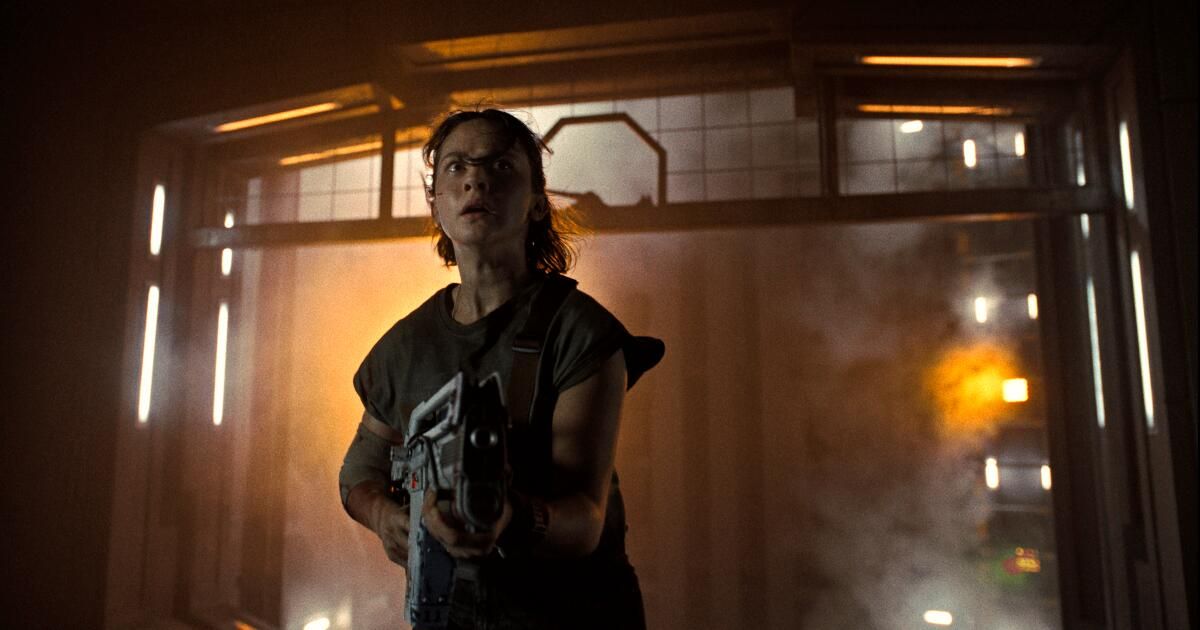The beauty of the “Alien” franchise is that it has always left room for distinctive filmmakers to play with their own aesthetics and themes. Ridley Scott’s tense, philosophical space thriller “Alien” gave way to the sweaty, militarized machismo of James Cameron’s “Aliens.” David Fincher brought the industrial Soviet aesthetic and psychosexual tension of his Madonna music videos to the stylish “Alien 3” (though he forwent his feature debut); even the dark, whimsical French auteur Jean-Pierre Jeunet put his quirky stamp on “Alien: Resurrection,” before Scott himself returned for the bloody, brooding prequels “Prometheus” and “Alien: Covenant.”
Now that “Evil Dead” and “Don’t Breathe” director Fede Alvarez is at the helm of “Alien: Romulus,” it’s no surprise that his version is a restrained horror film drenched in gooey gore, in which a group of young fighters are hunted by an unknown monster. Co-written by Alvarez and Rodo Sayagués, the script for “Alien: Romulus” is ruthlessly efficient and touches on recognizable themes from the series: pregnancy, female strength and the clash between human and artificial intelligence.
You could argue that the “Alien” movies are like pizza: They’re good even when they’re not that good, and, aside from a few mind-bending decisions that will no doubt inspire plenty of think pieces, “Alien: Romulus,” with its thrilling feel and appealingly spunky cast, is a very enjoyable pizza.
Cailee Spaeny, who recently starred in “Priscilla” and “Civil War,” dons Ellen Ripley’s Reeboks as our heroine, Rain, who wants only one thing: to see the sun. She’s trying to get off the mining colony Jackson with her “brother,” a synthetic (or droid) named Andy (David Jonsson), and move to the agricultural planet of Yvaga. But the Weyland-Yutani corporation keeps moving the goalposts, and she hasn’t met her quota of hours in the mine. Knowing the company will never do right by her, she teams up with a group of friends to search for cryopods on an abandoned ship floating overhead, hoping they can make it to Yvaga on their own.
Archie Renaux and Cailee Spaeny in the film “Alien: Romulus”.
(20th century studies)
A group of teenagers rob a seemingly deserted house, unaware of what dangers await them? This sounds a lot like Alvarez’s “Don’t Breathe.” Naturally, the ship, recently ravaged by “Alien”-like events, is swarming with facehuggers and xenomorphs, and friends are separated and disposed of, bad decisions are made, and all manner of unholy creatures burst forth from various body cavities.
At the center of the story is the relationship between Rain and Andy. She struggles with the idea of leaving him behind when she considers his plans, but then a security update to his software, which allows him to access different parts of the ship (its two halves are named after Romulus and Remus, the twins of Rome), reboots him into something colder and more calculating. Initially programmed by Rain’s late father to do what’s best for her (and tell dad jokes), Andy’s new directive is to finish the mission for the company.
This doesn't happen in a vacuum. Andy comes under the influence of a very compelling new character left over from the earlier massacre, a chewed-up, half-destroyed synthetic named Rook with a strikingly familiar appearance. With a performance constructed from voice actor and facial scans, Alvarez has brought a memorable but deceased “Alien” actor back to life.

David Jonsson in the film “Alien: Romulus”.
(20th century studies)
The trend of reanimating dead stars in “sequels” or “interquels” (Harold Ramis’ ghost in “Ghostbusters: Afterlife”; Peter Cushing in “Rogue One”) is both off-putting and ethically questionable, especially considering the actors’ constant struggle to control their own image in the face of the looming threat of AI. Those questions aside, if the addition works in “Alien: Romulus,” it’s because they’re not aiming for realism with this mangled droid. Still, it’s annoying, especially considering Alvarez’s commitment elsewhere to grimy, practical sets and props. It also features a fantastic, standout performance from Jonsson, who alternates between wounded puppy and sly corporate proxy.
There are other superficial pleasures to be had in “Alien: Romulus,” including Galo Olivares’ incredibly rich cinematography and the weathered, brightly red-lit interiors, glistening with alien mucus. Benjamin Wallfisch’s score groans and echoes ominously, at times dipping into synthesized electronic moments.
At the center of it all is Rain, played by Spaeny, the center of the film's intelligence. Her empathy complicates things, but her ability to read and interpret situations surpasses any synthetic calculation. Spaeny, short, compact and young, does not convey the agile power of Sigourney Weaver or Katherine Waterston, nor the firmness of Noomi Rapace, all of whom have taken up arms against the xenomorphs in previous “Alien” films.
But Alvarez gives Spaeny her heroine moments, whether looking out for her fellow soldiers or destroying an invasive species, and she expresses the inner strength and sheer determination to survive that is required in an installment of the “Alien” franchise. Sometimes, that display of sheer humanity and courage is all it takes to make one of these films a success.
Katie Walsh is a film critic for the Tribune News Service.
'Alien: Romulus'
Qualification: R, for bloody and violent content and language
Duration: 1 hour, 59 minutes
Playing: In general release on Friday, August 16












